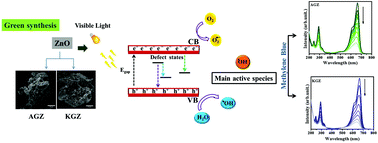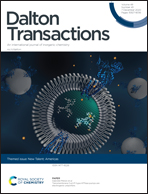A novel green approach based on ZnO nanoparticles and polysaccharides for photocatalytic performance†
Abstract
Novel green photocatalysts based on ZnO in the presence of arabic gum (AGZ) or karaya gum (KGZ) were synthesized by a sol–gel method for photocatalytic performance. The materials were characterized by XRD, FTIR spectroscopy, SEM, nitrogen adsorption/desorption, and PL and diffuse reflectance spectroscopy. Photocatalytic test was performed using methylene blue (MB) dye as the target pollutant under visible light. The reuse of photocatalysts and Artemia saline bioassays were investigated. The ZnO nanoparticles showed a hexagonal structure and the values of the band gaps were 2.95 (AGZ) and 2.98 eV (KGZ). The PL results demonstrated emission bands at 440, 473 or 478 and 549 nm. The textural properties indicated the presence of typically mesoporous materials. The MB discoloration efficiency was 81.5% and 91.0% for AGZ and KGZ, respectively. The photocatalytic activity of AGZ and KGZ was maintained after the third run. The ˙OH radicals are the main species involved in the MB discoloration. The MB discoloration from the photocatalysts showed no toxicity; therefore, they are considered to be promising materials for the degradation of the dye in the photocatalytic process.

- This article is part of the themed collection: New Talent: Americas


 Please wait while we load your content...
Please wait while we load your content...